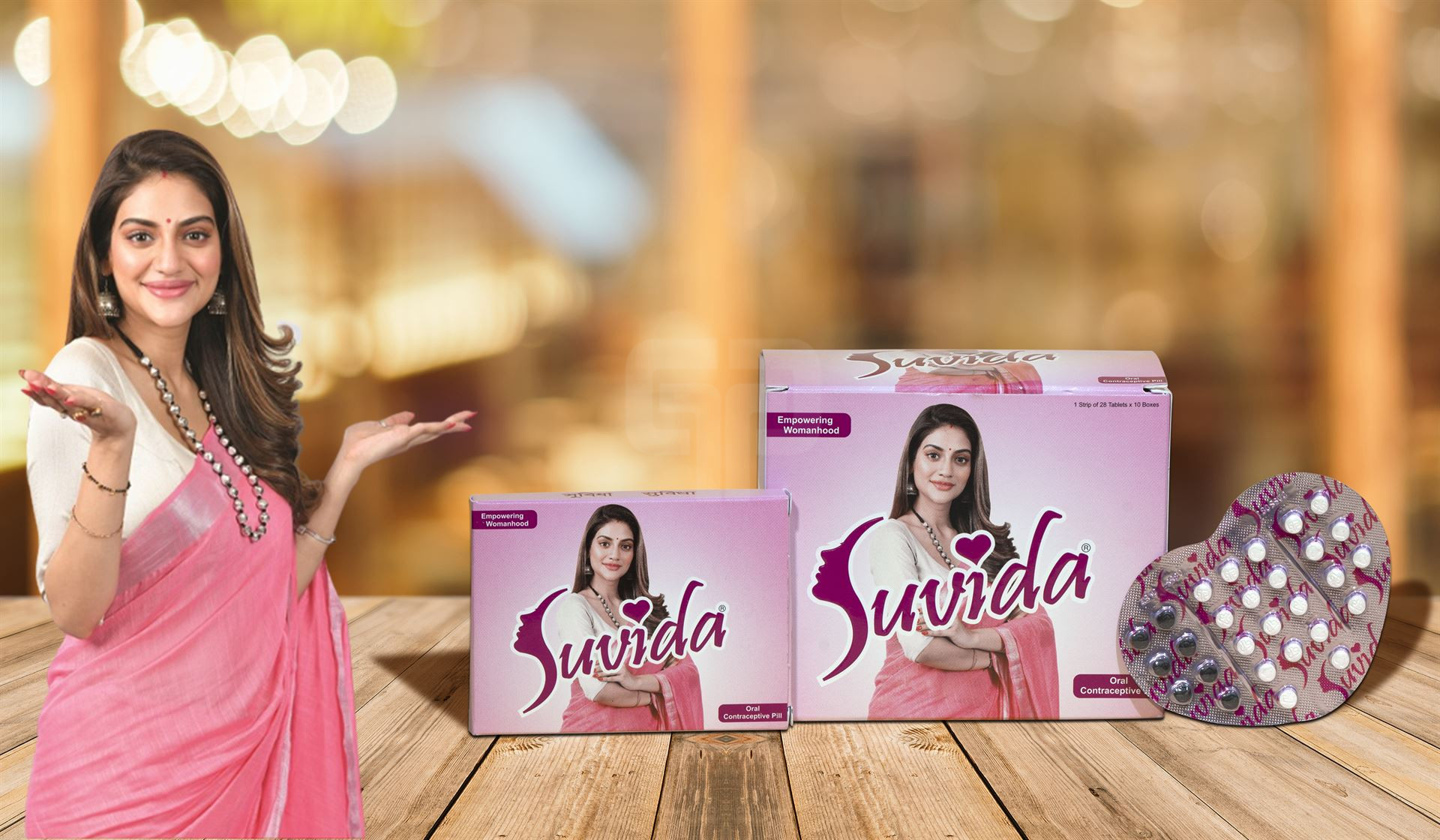
The Contraceptive Epidemiology
Worldwide, 922 million women of reproductive age (or their partners) are contraceptive users. Among the 1.9 billion women of reproductive age (15-49 years) living in the world, 1.1 billion have a need for family planning, that is, they are either current users of contraceptives. Of them, 842 million use modern methods of contraception and 80 million use traditional methods or, have an unmet need for family planning. Also, 190 million women want to avoid pregnancy but, do not use any contraceptive method. Among the women of reproductive age (15-49 years), 779 million contraceptive users are married & 143 million users are unmarried women. In these 143 million unmarried women, the most common method has been seen to be the use of the pill at 26.1%.
Female sterilization and male condom have been seen to be the two most common methods used worldwide. Female sterilization is the most common contraceptive method used worldwide. In 2019, 23.7 per cent of women, that is 219 million women, were using contraception in the form of female sterilization. Three other methods having more than 100 million users worldwide are the male condom (189 million), IUD (159 million) and the pill (151 million). Overall, 45.2 per cent of contraceptive users rely on permanent or long-acting methods (female and male sterilization, IUD, implant), 46.1 per cent on a short-acting method (such as male condom, the pill, injectable and other modern methods) and 8.7 per cent on traditional methods (withdrawal, rhythm methods and other traditional methods).

Indications
Approximately 25% of women aged 15-44 currently use contraception in the form of the pill as their method of choice. Oral contraceptive pills are either combined estrogen-progesterone (also called combined oral contraceptive pill- COC) or progesterone-only pill (POP). Progesterone is the hormone that prevents pregnancy, and the estrogen component controls menstrual bleeding. OCP’s can be used to address other health conditions, particularly menstrual-related disorders such as menstrual pain, irregular menstruation, fibroids, endometriosis-related pain, and menstrual-related migraines. If there are no medical reasons upfront on why you cannot take the pill, and you are not a smoker, you can take the pill until your menopause. However, the pill is not suitable for everyone.
Nearly all women can use COCs safely and effectively, including women who:
- Have or have not had children
- Are married or are not married
- Are of any age, including adolescents and women over 40 years old
- After childbirth and during breastfeeding (Progesterone Only Pill) & after 6 weeks (Combined OCPs)
- Have just had an abortion, miscarriage, or ectopic pregnancy
- Smoke cigarettes but under 35 years old
- Have anemia now or had in the past
- Have varicose veins
- Are living with HIV, whether or not on antiretroviral therapy
Also, women can begin using COCs without a pelvic examination, without any blood tests or other routine laboratory tests, without cervical cancer screening & without a breast examination.
After giving birth, a woman can start OCP on day 21, 3 weeks post delivery provided that she is not breastfeeding the baby. In cases where the mother is breastfeeding the child, OCP can be started after 6 weeks safely. Progesterone Only Pill can be started post pregnancy during breast feeding.
Post miscarriage or abortion, OCPs can be started from 5 days post the event and it gives immediate protection from further unwanted pregnancy.
Advantages
OCPs provide a multitude of benefits. OCPs help protect against or reduce the chances of:
- Risk of unwanted pregnancy
- Reduce risk of endometrial cancer
- Reduce risk of ovarian cancer
- Reduce the risk of colorectal cancer
- Help in reducing symptomatic pelvic inflammatory disease
- Reduce chances of ovarian cyst
- Reduce chances of developing iron deficiency anemia
- Reduce menstrual cramps, excessive menstrual bleeding & ovulation pain
- Reduce excessive hair on face & body
- Reduce symptoms of PCOS & Endometriosis.
Common Myths of OCPs
With the use of OCPs comes responsibilities and a lot of advantages. But along with it there are also a lot of misconceptions on the use and side effects or adverse effects with the use of OCPs. A few of the common misconceptions are debunked as follows:
- They do not build up in a woman’s body. Women do not need a “rest” from taking COCs.
- Do not make women infertile after they stop taking COCs.
- Do not cause birth defects or multiple births.
- Do not change women’s sexual behavior.
- Do not collect in the stomach. Instead, the pill dissolves each day.
- Do not disrupt an existing pregnancy.
Mechanism of Action of OCPs
OCPS usually contain Estrogen & Progesterone in combination known as Combined OCPs or they contain only Progesterone known as Progesterone Only Pills.
Progesterone is primarily responsible for preventing pregnancy. The main mechanism of action is the prevention of ovulation by inhibiting follicular development and thereby preventing ovulation. Progestogen negative feedback works at the hypothalamus to decrease the pulse frequency of the gonadotropin-releasing hormone (GnRH). This, in turn, reduces the secretion of follicle-stimulating hormone (FSH) and decreases the secretion of luteinizing hormone (LH). If the follicle isn’t developing, there is no increase in the estradiol levels. The progestogen negative feedback and lack of estrogen positive feedback on LH secretion inhibits the mid-cycle LH surge. With no follicle developed and no LH surge to release the follicle, ovulation is prevented.
Another primary mechanism of action is progesterone’s ability to inhibit sperm from penetrating through the cervix and upper genital tract by making the cervical mucous environment unsuitable towards sperm implantation.
Estrogen has some effect with inhibiting follicular development because of its negative feedback on the anterior pituitary with reduced FSH secretion. It’s just not as prominent as the progesterone’s effect but adds to the overall effect.
-
 📅 October 7, 2025
📅 October 7, 2025
In recent years, liposomal glutathione capsules ha... -
 📅 October 7, 2025
📅 October 7, 2025
In the ever-evolving world of health and wellness,... -
 📅 October 7, 2025
📅 October 7, 2025
In today’s fast-paced world, maintaining strong ... -
 📅 October 7, 2025
📅 October 7, 2025
Iron deficiency remains one of the most prevalent ... -
 📅 October 7, 2025
📅 October 7, 2025
Dull, uneven skin tone and stubborn dark spots are... -
 📅 October 7, 2025
📅 October 7, 2025
Iron-deficiency anemia (IDA) is the world’s most... -
 📅 October 7, 2025
📅 October 7, 2025
Acne-prone skin needs more than just surface-level... -
 📅 October 7, 2025
📅 October 7, 2025
Blemishes don’t stand a chance when you harness ... -
 📅 October 7, 2025
📅 October 7, 2025
The quest for radiant, hydrated, and even-toned sk... -
 📅 October 7, 2025
📅 October 7, 2025
In the ever-evolving landscape of beauty and perso...
